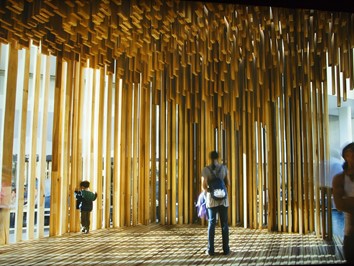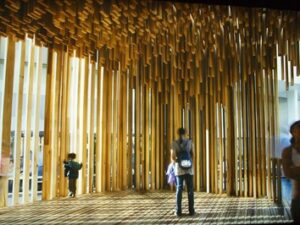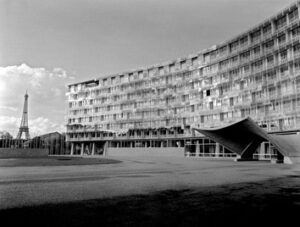
Suitable role models in spatial design?
In traditional spatial design education there are many well known figures who you could describe as role models. Designers and architects who have inspired students over the years; individuals who are tiny jigsaw pieces in the vast picture that makes up the history of the built environment. But how many of these people look like you, or me, or the person who lives across the street?
Everybody is a ‘consumer’ of the built environment. We all live and work in the spaces that exist around us. But are the people who make those spaces – the people who decide how those spaces function – truly representative of the people who use them?
The answer is – no.
I have been wanting to write a blog about diversity in interior design education and practice for some time, but I didn’t know how to start. I am not at

all representative of diversity in the UK. I’m white, from an average background and have had many advantages in life. In so many ways I don’t feel qualified to talk about a subject that I do not feel is ‘mine’.
I studied architecture, and have practiced interior and spatial design for almost 30 years. I’ve worked in many different professional environments, with many different people, and I’ve learnt lots over the years. But the thing I keep coming back to, especially as we design new courses for our own Interior Design students, is the huge amount that I wasn’t taught.
Quite simply – I wasn’t taught about the huge diversity of people in architectural history.
I wasn’t taught about amazingly different building types in countries all over the world. I wasn’t taught about spatial design in a context as broad as the world in which it exists.
I was taught a very white, very male, very westernised version of spatial and architectural design; and this was the version that I carried with me for the earliest part of my career. Gradually I have learnt a broader context, and learnt to question what I was taught, and why I was taught in such a way.
Most of us have heard of Le Corbusier, but why do we hear less often of other designers and architects who are not white, male and from Western Europe?

Why do we not hear more about people such as American architect Beverly Loraine Greene who, with Marcel Breuer, worked on the UNESCO United Nations Headquarters in Paris? Or Achyut Kanvinde (1916 – 2002) and Habib Rahman (1915 – 1995), Indian Modernist architects who both worked with Walter Gropius and were heavily influenced by Bauhaus thinking. Or J Max Bond Junior (1935 – 2009) who was described as one of the most significant architects of the 20th Century? You may have heard of renowned Chinese architect I M Pei (1917 – 2019) but have you heard of Zhang Ke? Or do you know of British architect Elsie Owusu, born in Ghana, trustee of the RIBA and founding member of the Society of Black Architects?
To return to the idea of role models; British-Ghanaian architect David Adjaye is recipient of the 2021 RIBA Royal Gold Medal, an award which recognises people who have dedicated their lives to the advancement of architecture. You could argue that he is a fantastic role model for young spatial designers; you could argue that the subject of diversity in spatial design is ‘his’. David Adjaye is an extremely talented and successful architect. He inspires people from all walks of life, through his work and through his approach to architectural practice. But Adjaye does not want to be a role model; he does not believe that his architectural journey was one that should need to be copied. Opportunities, encouragement and diverse knowledge should be available to everybody, whether they look like you, like me, like David Adjaye, or like the person across the street.
“I am happy to be celebrated. But I am not the model that I want any kid to follow. This is an exception, me charting a path despite the process. It should be a path because of the process.” – David Adjaye 2020.
From the article https://www.ribaj.com/culture/royal-gold-medal-2021-david-adjaye-profile

As a spatial design student it is incredibly important to make your own learning journey as broad as possible. You will be taught key points and fundamentals, but it is up to you to find your own path, explore your own broad contexts, be inquisitive and endlessly curious.
Consider built environments across the wider world, the contexts that help shape them, and the people who designed them. We can highlight interior designers and architects in the learning materials, but you must take these as a starting point to spark your own interest; they are not the entire narrative, they are just the beginning of the story.
Designers and architects from all backgrounds, with huge diversity in cultural heritage and experience, contribute to the wider spatial design environment that we all live in.
We all have cultural differences, and so should the people who design the spaces that we occupy.
For further reading:
https://en.wikipedia.org/wiki/Beverly_Loraine_Greene
http://architectuul.com/architect/achyut-kanvinde
http://www.bauhaus-imaginista.org/articles/6220/habib-rahman
https://en.wikipedia.org/wiki/J._Max_Bond_Jr.
https://www.archdaily.com/879518/zhang-ke-awarded-2017-alvar-aalto-medal
https://www.ft.com/content/8f53b1cc-b824-11e8-a1d8-15c2dd1280ff
|
|






